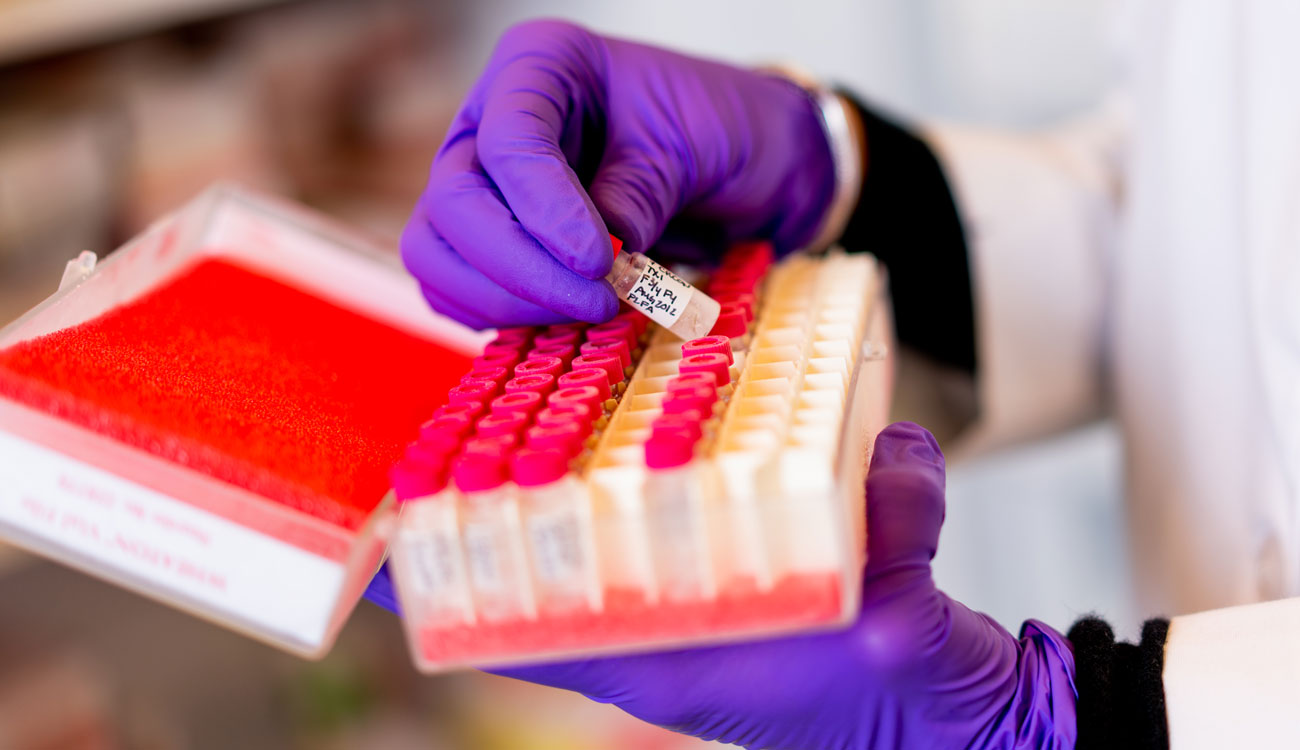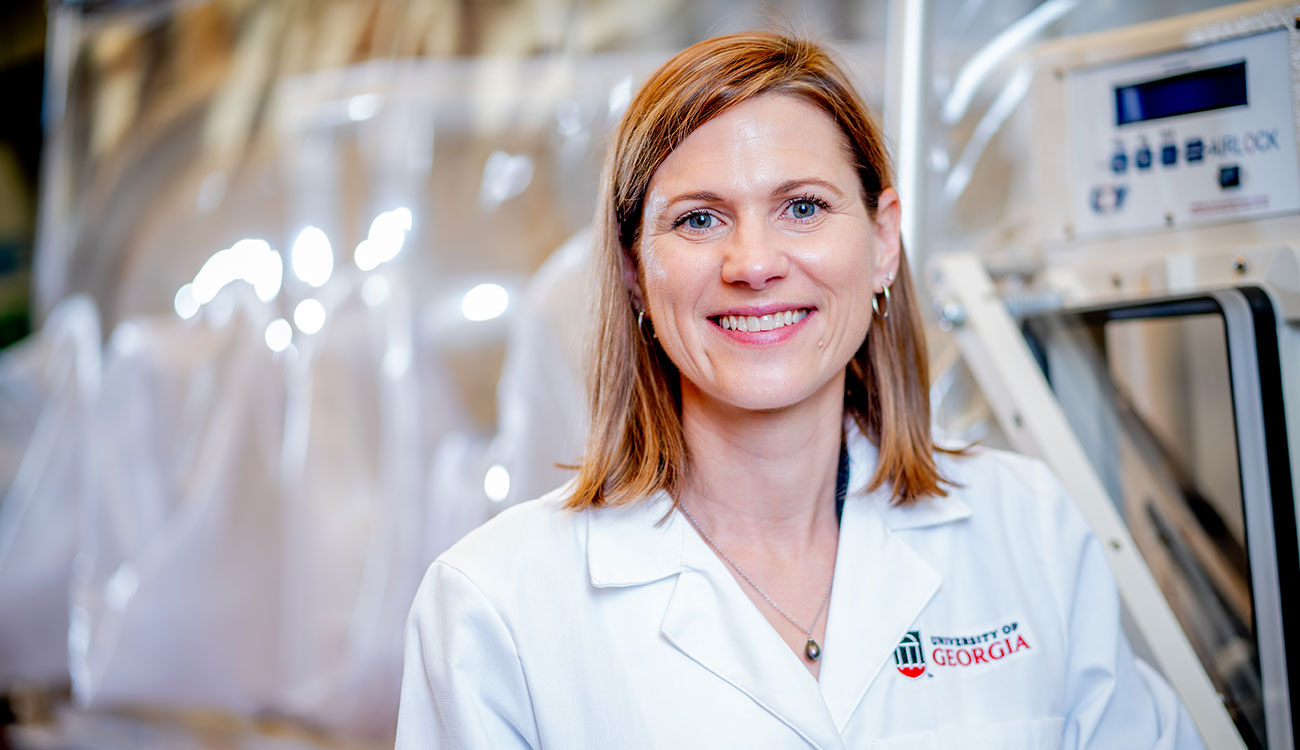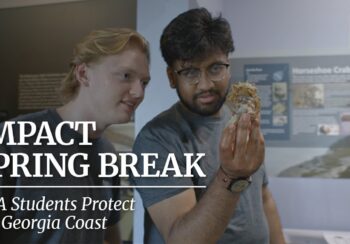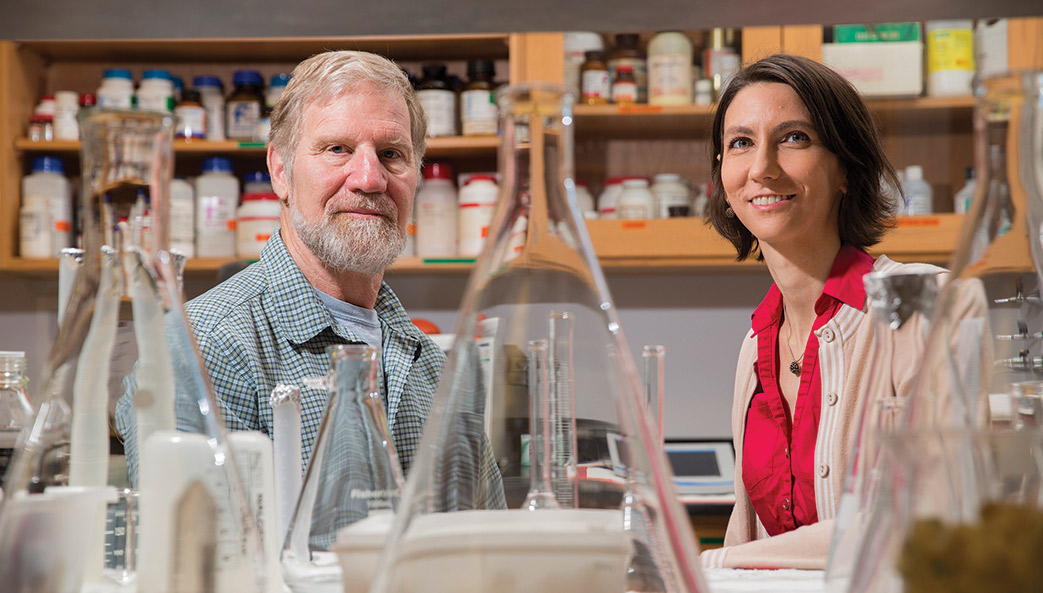With rising sea levels and warming ocean temperatures, many scientists are worried about what it means for ecosystems around the world.
Amanda Spivak, an associate professor of marine sciences in UGA’s Franklin College of Arts and Sciences, studies coastal ecosystems along the Atlantic Ocean. She moved to UGA in January 2019 and studies coastal ecosystems in Georgia. Her research focuses on coastal resiliency and sustainability, with the goal of predicting how ecosystems will respond to and recover from human disturbances.
What exactly is a coastal ecosystem?
A coastal ecosystem sits right at the interface of terrestrial landscapes and marine waters, where the edge of the land meets with the ocean. This can encompass a lot of different kinds of ecosystems. The one we probably think about the most is the beach. The ones I study tend to be vegetated, which include seagrasses, salt marshes and mangroves. Seagrasses are submerged systems below the low-tide line; salt marshes are emergent systems, meaning they’re exposed to the atmosphere during low tides and partially submerged by high tides; and mangroves are trees that grow in saline or brackish water in subtropical latitudes. If we move a bit farther inland, we have tidal freshwater systems, which include a couple of different types of vegetation, such as cattails, trees and shrubs.
Why is it important to study these types of ecosystems?
Coastal ecosystems provide a lot of economically valuable services to people. They support commercial and recreational fisheries, including shellfish. They provide opportunities for recreation for boaters, kayakers and birders. The plants improve the quality of coastal waters by removing nutrients. This helps mitigate eutrophication and hypoxia, conditions where excess nutrients lead to an overgrowth of algae and low oxygen levels that kill fish and other animals.
Perhaps most importantly, coastal ecosystems are a first line of defense against damage from storms, like hurricanes, and rising sea levels. Marshes and mangroves bear the brunt of wind and wave energy and buffer coastal communities from damage. This is really important for Georgia’s resort communities and coastal farmers. Wetlands are able to do this by growing vertically each year. This is a really unique characteristic of these ecosystems that is driven by the plants. When marsh grasses and mangroves photosynthesize, they pull CO2 from the atmosphere and store a fraction of it in below-ground roots. The roots and other components of the soils break down very slowly in coastal wetlands. The combination of new root growth each year and the preservation of older material allows wetlands to gain vertical elevation and makes them really good at storing carbon. Disturbances that impair plant growth or alter soil processes limit the ability of wetlands to grow vertically and may even cause subsidence. If this happens, then wetland ecosystem services are diminished, and coastal communities are left vulnerable.

How do researchers in your field make inferences about the natural world?
There are many different ways we can learn about how the environment works. One of the most tried-and-true approaches is making observations in the field. Long-term observations, such as those being made at the Georgia Coastal Ecosystems-LTER site at UGA’s Marine Institute on Sapelo Island, are important for understanding how the environment changes over time. Sometimes it is difficult to know what is driving a particular observation in the field, so we conduct experiments to better understand the effects of, say, sea-level rise versus climate warming. We can test the effects of each disturbance in isolation and then put them together and see if they have a different, synergistic interaction. We take those data and compare them to observations in our coastal system and say, “Okay, these are likely the really important factors that are causing the patterns we see in the natural world.”
We used this kind of approach in a recent study to understand how eutrophication impacts coastal food webs. We conducted some small-scale experiments to determine the types of food eaten by mummichogs, which are fish that are prey for other species, such as striped bass. We found that mummichogs get much of their energy by eating terrestrial insects, like crickets and spiders. They consume insects during the short windows of time when the tide over tops the marsh. Even though mummichogs spend most of their time in tidal creeks, there simply are not enough worms and other prey to sustain them. At the landscape scale, we found that eutrophication degrades tidal creek banks, and this structural change reduces mummichog access to the marsh. We were surprised to find that eutrophication not only impairs how the ecosystem functions, but it also disrupts key links in the marsh food web that supports coastal fishes.
What are a few of the biggest concerns right now for researchers in your field, and why?
The two biggest factors causing global losses of salt marshes, mangroves and seagrasses are climate change and anthropogenic disturbances. The disturbances category includes a wide range of things, from landscape development to certain agriculture and aquaculture practices to structures that alter tidal flow to mosquito ditches. Salt marshes and mangroves may be able to migrate inland in response to sea-level rise, but that is not possible in many areas due to structures such as sea walls. Oftentimes, we find that rapid rates of sea-level rise are causing marshes to shrink or drown. Mangroves are starting to expand into higher latitudes because winter low temperatures are getting warmer and there are fewer freeze events. We may actually start to see mangroves in Georgia. One of the most important things we need to do is communicate information about the threats to coastal ecosystems and how we might be able to mitigate disturbances or restore lost functions.
What inspired you not only to research ecosystems, but coastal ecosystems in particular?
I like being outside and being near the water. I’ve worked in different kinds of coastal ecosystems—estuaries, mangroves, marshes and seagrasses—and there’s something really nice about being out on the water and hearing the waves, birds and even the bugs. They’re beautiful, inspiring places. Marshes in particular look like a monoculture of a lawn, but there is so much happening. The interactions between the plants, animals, microbes and elements make these beautiful, tranquil places what they are and provide the important ecosystem services that we depend on.






